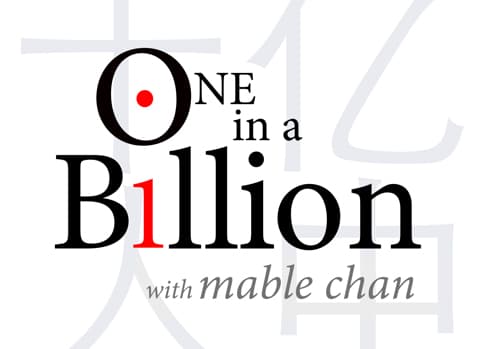Unlocking Potentials for Girls in STEAM
Let’s recall our younger days. Since when did science or math classes become “uncool?” Since when did math clubs become “boys clubs”?
At the International Women’s Day Forum held by the U.S. Chamber of Commerce Foundation, we discussed this shift in a session focused on STEM, the competitive workforce, women & science, and the diverse leadership pipeline.
Women make up almost half of the U.S. workforce, but just 24 percent of STEM workers. Although women remain underrepresented in math and sciences to a lesser degree than in the past, the greatest disparities still occur in engineering, computer science, and the physical sciences.
Throughout the forum, speakers unanimously agreed that the gender gap starts widening for girls almost exponentially at puberty. It is also when math or science classes begin to get harder. Without proper encouragement or engagement, girls start to fall out of STEM very easily.
According to the World Economic Forum, we are facing the 4th Industrial Revolution — “a new chapter in human development, enabled by extraordinary technology advances with those of the first, second, and third industrial revolutions.” The World Economic Forum also predicted that it would take another 202 years to close the economic gender gap globally. Access to technology and STEM skillsets could be one of the major factors broadening the gap as we’re caught in the middle of the 4th Industrial Revolution.
What are some approaches to this problem? Here are my takeaways:
1. Put the “A” into STEM to make it STEAM.
Researches have shown that middle school is a critical time for girls in math and sciences. It is when math and sciences begin to seem “uncool.” While almost all girls in this age group consider themselves as “creative,” the “creativity” only stays within arts and crafts.
According to the Brookings Institution, women earn 57% of all four-year degrees but only 35% of STEM degrees. Following degree completion, they account for just 22% of the STEM workforce and are responsible for only 16% of granted patents.
It’s time for us to re-think how we can better integrate the “arts” into STEM. This not only means to make STEM programs more fun and attractive to girls but also to incorporate the artistic and design-related skills and thinking processes to STEM programs in general.
STEM to STEAM is a movement championed by the Rhode Island School of Design (RISD), aiming to place Art & Design at the center of STEM and encourage the integration of Art & Design in K-12 education. Arts — including liberal arts, fine arts, music, design-thinking, and language arts, are critical components to innovation. By bringing in the human side to innovation, arts answer the moral questions that new technologies raise.
In reality, true innovators practice more than technical skills. Examples are Einstein, da Vinci, and Steve Jobs, who remained curious across disciplines. The arts encourage natural curiosity. STEAM not only helps to attract more students into STEM learning but also make the innovation pipeline more robust and inclusive.
2. Encourage girls to think big and focus on their long-term goals.
One panelist, Mona Siddiqui, shared her experience coming from a STEM background. She currently is the Chief Data Officer at the US Department of Health and Human Services. When asked about how she cultivated her passion for the math and sciences, Mona shared that she always looked at the big picture. She encouraged girls to focus more on the long-term goals, rather than what they enjoy doing at the moment.
Another panelist, Natalie Dusi, CSR Program Manager at Qualcomm, resonated Siddiqui’s advice by sharing her experiences from working to expand the innovation pipeline, in which girls and women are often underrepresented. “It’s about making a connection – from their big dreams to the current skill sets,” she said.
Encourage girls to think big. By motivating girls to focus on their long-term goals, we can help them to remove the mental blocks against their currently unpreferred subjects. We can help them understand that by acquiring these “not-so-fun” skills at the moment, they are a step closer to the destination that they dream to be at.
(Watch the panel discussion here: 1:48:48-2:07:22)
3. “You can’t be what you can’t see.”
We all know women are underrepresented in STEM. When asked to name their favorite scientists, girls often have male scientists in mind, and almost always, they struggle to think of multiple women in math, engineering or physical sciences.
“You can’t be what you can’t see.” This is true for all of us.
We are shaped by our backgrounds, environments, and aspirations. Without these ideas or images that tell us who we are or what our potential is, we are left unaware and unable to be that which we cannot “see.”
Representation matters. The lack of diversity in the STEM fields presents a typical image of what career paths in STEM would look like. Without female role models to look up to, girls often easily self-select out of a career in STEM before they even give it a chance.
Many girls also lack awareness of the other fields that a STEM education would get them to. Girls need to see that STEM-related careers come in all shape and sizes. Teachers, parents, or mentors should encourage girls to explore the career potentials, and envision a career path in STEM which may not seem so apparent.
4. Unconscious bias creates unthinkable damages outside of our awareness.
The consulting firm McKinsey reported that “gender, ethnic and cultural diversity, particularly within executive teams, continued to be correlated to financial performance across multiple countries worldwide.” Yet, the report also showed continued neglect of diversity across organizations.
Unconscious bias, explained by Catalyst, exists in each person’s world view. We form these subconscious attitudes based on our experiences. They span race, gender, appearance, age, wealth, education, and much more. They influence everything from our daily purchasing decisions to the employees we want to promote. They contribute to why despite equalities apparently being enshrined in law or organizational policies, society and workplace still look so unfair.
Why is it, in general, girls feel that they have to be perfect in everything they put out? That they are called “dramatic” or “bossy” when they show emotions or lead assertively? That boys are encouraged to take risks and dream big, while girls are often overprotected and told to behave sweetly?
To unlock the potential of girls in STEM, or in any other female underrepresented fields, we need to change the way we treat girls and the way we think of gender roles.
Research suggests that children’s concept of gender develops gradually between the ages of three and five. After the age of five, they generally become motivated to seek out gender-related information and to strictly adhere to gender stereotypes. As we all contribute to how our society sets up gender expectations, we all have our share in the solution — even when we are staying silent, we are contributing to the shape of gender-stereotypes. Our casual actions or comments create ripple effects, and sometimes, they become the turning point of career aspirations for girls.
Unconscious biases are in all of us. They affect our behaviors from the classroom to the workplace. They are pervasive, yet malleable. We cannot completely rid ourselves of unconscious bias, but we can learn to mitigate its impact.
After the forum, the discussion stirred me to think, does the disparity in STEM mean that girls are excelling at non-STEM fields?
Back to the question of asking girls to name their favorite scientists, I thought to also ask the same question for women in the arts, particularly the visual arts. I was surprised — the same struggle persisted. Not to mention that for girls, even most adults struggle to answer that question. According to the National Museum of Women in the Arts, only 13.7% of the living artists represented by galleries in Europe and North America are women.
Truth is, young girls are struggling to find female role models across fields. Often, the problems that are facing women in the STEM fields are faced by women in all fields.
Statistics from the McKinsey Global Institute showed that by advancing women’s equality, $12 trillion could be added to global GDP by 2025. Thinking from another perspective, empowering girls is not only the right way but also the smart way to engage half of tomorrow’s workforce.
What’s more important, hidden in the numbers, is the untapped human potential. In all cases, there is an urgency to engage and empower girls. And at all levels, we need to act to close gender gaps in our society.


